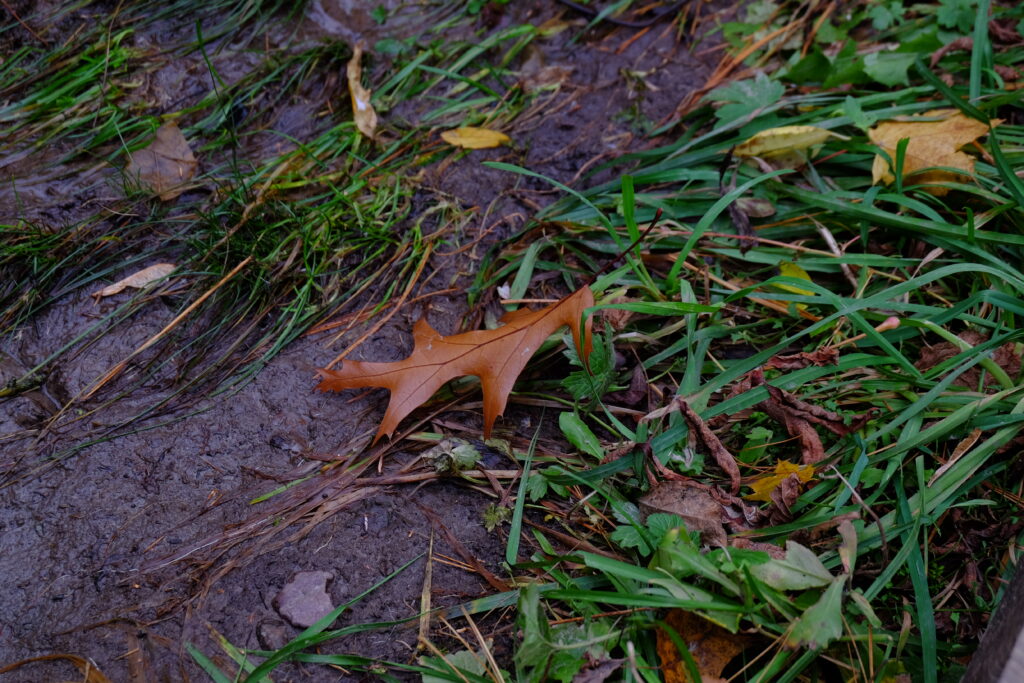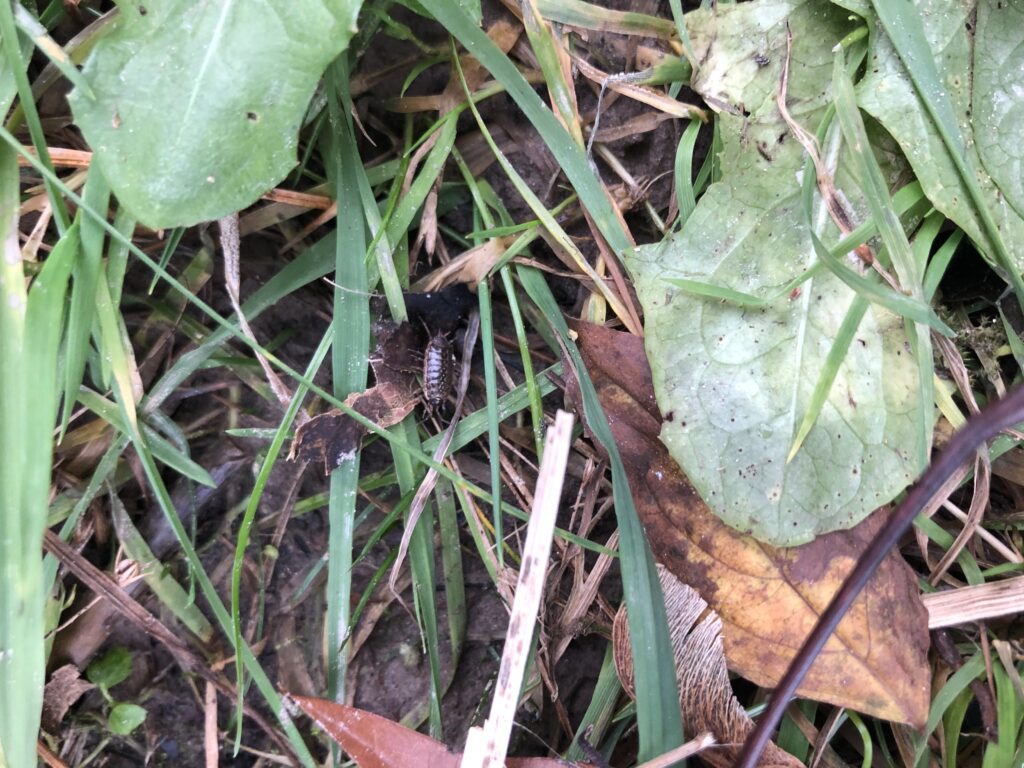This week’s assignment was all about finding organisms, mapping, and more seasonal changes. I visited my site today, November 1, right after a large rainstorm which explained many of the changes I saw there. One species I was able to identify due to the storm were the earthworms (Lumbricus terrestris) present in the wet soil. They were everywhere I looked and I had to be careful not to step on them. I identified one of the yellow and black birds I saw last time as Black-Capped Chickadee (Poeicille atricapillus). Chickadees do not fly south for the winter because they rely “on nuts from coniferous trees or they scavenge from birdfeeders which is why they have become dominant in the area it nears the colder seasons” (paraphrased from http://www.natureconservancy.ca/en/blog/winter-chickadees.html). The most dominant tree at my spot is a Norway Maple (Acer platanoides) which was one of the only trees that still had its leaves. I could tell this maple apart from others because of its yellow leaves with many black splotches. Two other dominant species were the Sciurus carolinensis (gray squirrel) and a chipmunk from the Sciuridae family. Both these animals are extremely present in the northeast so I wasn’t surprised seeing them prepare for winter. Another tree I saw growing low to the ground was a young Northern Red Oak (Quercus rubra) whichonly had a few large red leaves growing out of its very skinny trunk. I was surprised the wind didn’t knock it over! The northern red oak is a very common tree in Centennial Woods and this is just one of many saplings across the reserve. My favorite finding was a beetle from the Coleoptera order. This beetle was shiney, gray, and had many little legs running across the ground. I think this bug was present in the muddly soil but had to move outward as the brook started to overflow!
Despite my visits being only a week apart so much has changed in the surrounding area near my spot.There was a huge rainstorm the night before so the ground was soft and muddy. I think this caused the sides of the creek to “expand” as I said as it eroded into the water. The previous rain had caused the water level to rise in the brook to rise significantly and flow a lot faster. The water last week was clear but today it was a grayish-brown color due to the sediments it was picking up as it flowed. I was also able to notice a small waterfall towards the far end of my spot at the brook that wasn’t visible before due to all the tree leaves. The cattails in the wetlands were also more visible with weekly change and tanner in color. The ground was completely covered in leaves from the surrounding trees.
After creating my map I was able to understand the place a little more. I got to see new details of my spot at Centennial Brook. The most shocking thing to me was that I was able to remember all the basic details of the place after only visiting four times. I was also able to remember landmarks in the woods that showed me if I was gettingt close to my spot, like the footbridges. I was able to understand my place in location to the large woods surrounding it and how much it impacts the wetlands and trees growing near it.







